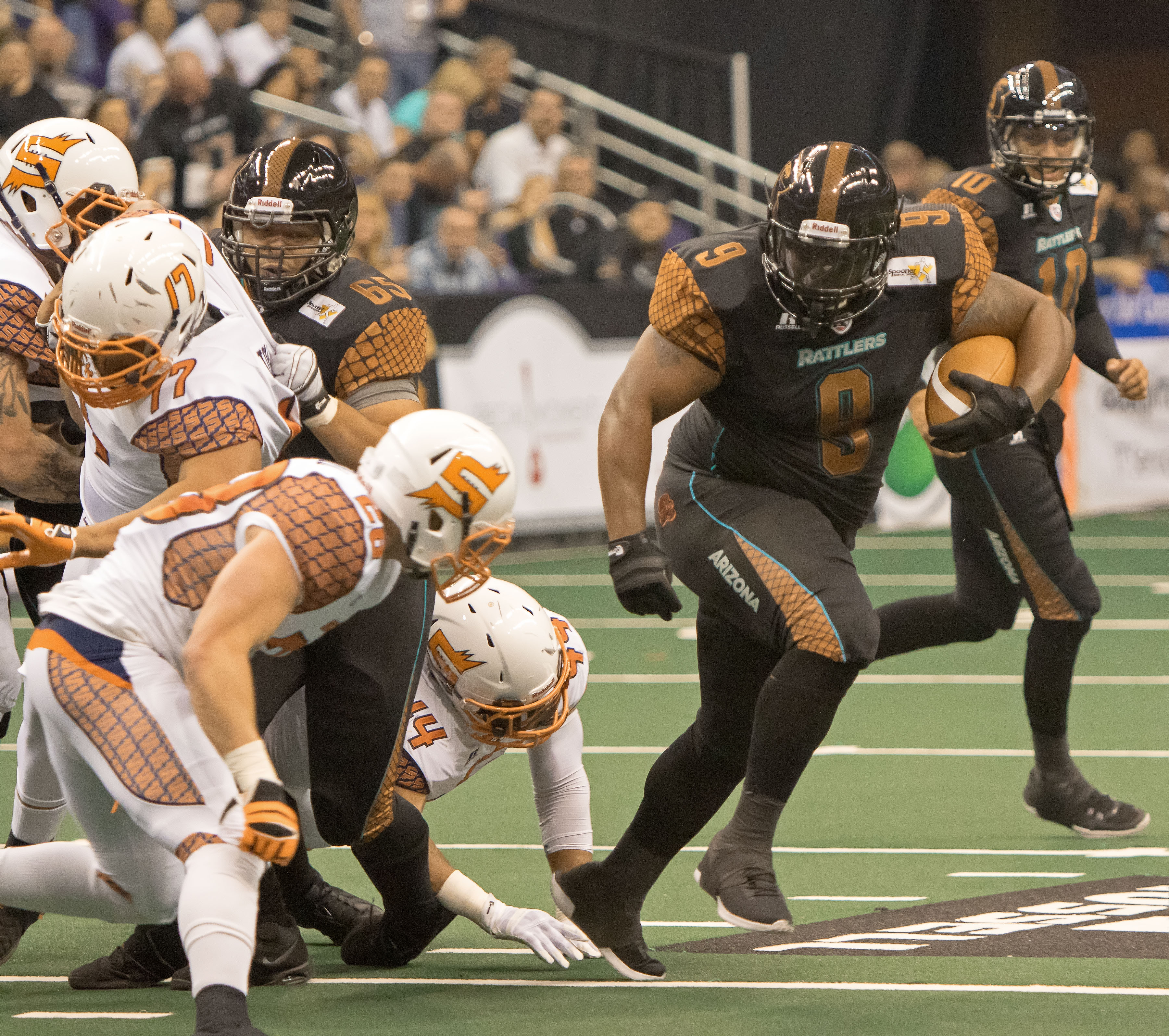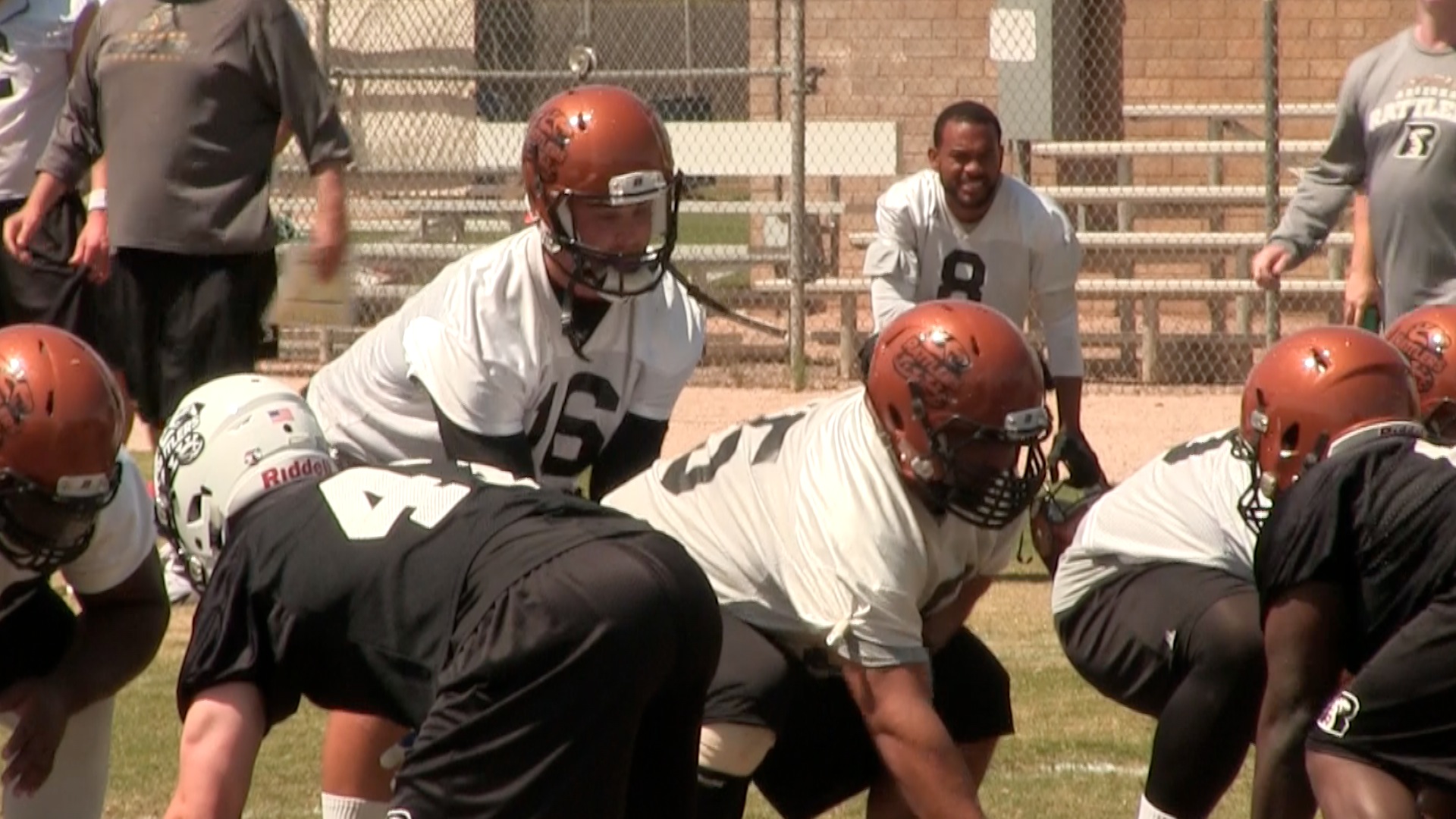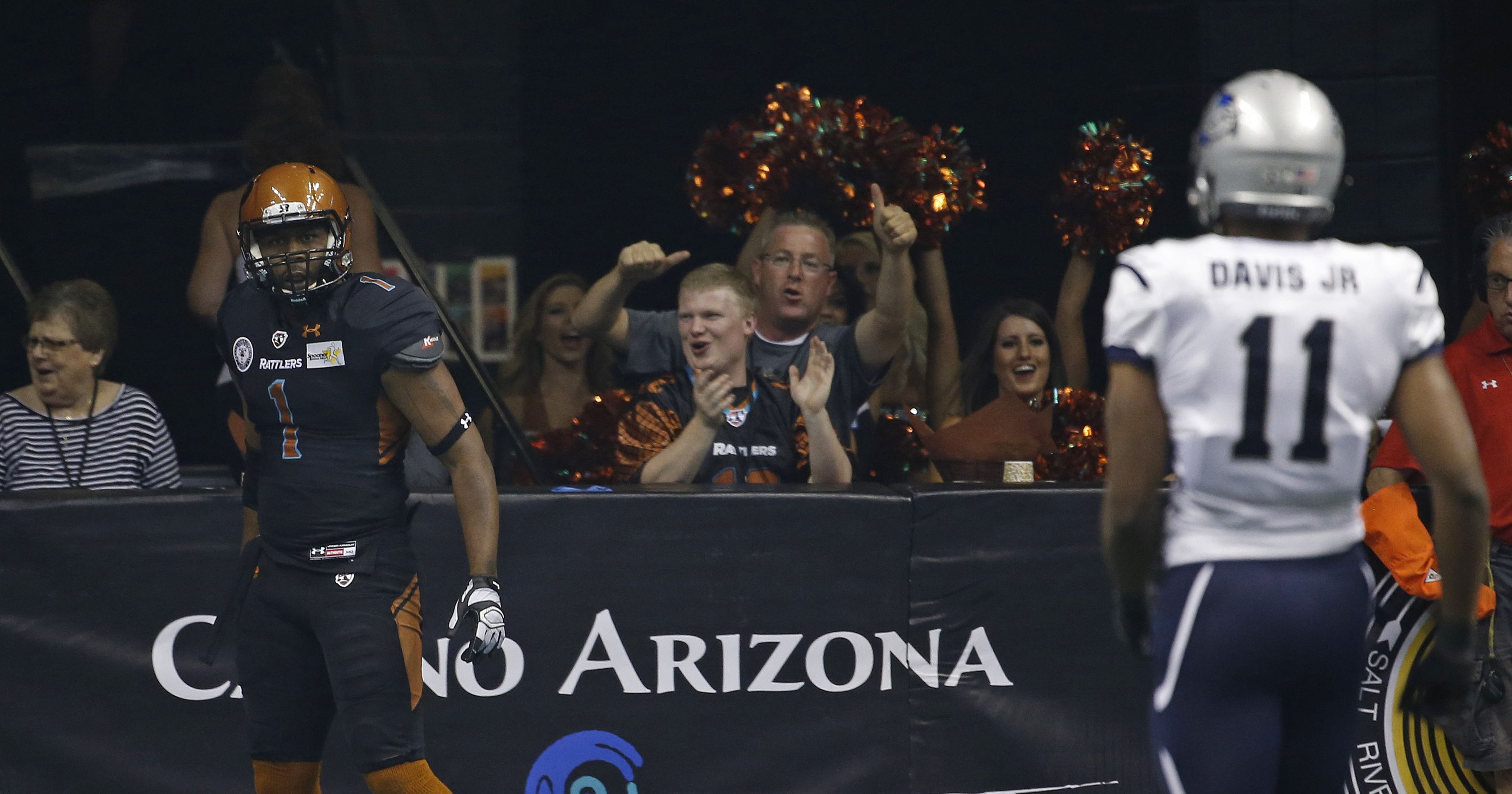By Jeff Munn
It isn’t as big as the Cardinals hosting Monday Night Football, or the Diamondbacks introducing their new General Manager, but Monday’s news concerning the Arizona Rattlers does hit a nerve.
While the Rattlers are moving to the Indoor Football League, their departure from the Arena Football League feels like a death in the family.
Or, in another sense, for the league that originated the phrase “50-yard indoor war”, the Rattlers’ departure feels like the war is over….and nobody won.
You can’t blame Rattlers owner Ron Shurts. With the AFL down to four teams. It’s a pretty hard sell to season ticket holders that a league that has less than six teams is viable.
This not as much about the Rattlers moving to the IFL, it’s about what they’re leaving.
When the Phoenix Suns purchased an AFL expansion franchise for $250,000 25 October’s ago, the Arena League was four years old, and was actually starting to realize the vision another league set as a goal in the previous decade. Arena Football provided football to a country starved even then for as much football as they could get at a time of year when there wasn’t much football being played.
The Rattlers were not only a success locally, but they served as a model franchise for the entire league. Having an NBA or NHL team that managed its arena own and operate an AFL team made economic sense – the parent team could absorb losses, while guaranteeing suite holders events in the summer, when arenas were usually used only for concerts and circuses.
The pay, $800 a game per player if the team won, $300 if they didn’t, also kept costs low.
For those of us lucky enough to be a part of the Rattlers at its inception, we took immense pride in “our baby”, the little football team purists often scoffed at, but not when that team was lifting up a championship trophy.
The AFL grew as the Rattlers did. ESPN gave way to The Nashville Network, and eventually in 2001, NBC made the bold move to show AFL games in NFL fashion, on Sundays, on a regional basis.
That’s where it seemed to start going off the tracks.
NBC wanted the AFL to start its season the week after the Super Bowl, and strange as it sounds, America usually needs a little breather from football right about that time. Like other pro football leagues, ratings were solid initially, but declined quickly. Thrown in the player’s decision to unionize, leading to increased payrolls, and it’s little wonder the league eventually filed for bankruptcy in 2009 and shut down for an entire year.
When it came back, the AFL had lost its momentum, its allure, and most importantly, most of its TV revenue. It just wasn’t the same.
The game’s inventor, Jim Foster, worked in marketing with the USFL Arizona Wranglers, and had watched that league, armed with a network and cable TV deal, turn from mild success in 1983 to rapid disintegration in 1985 and, with a current presidential candidate leading the charge, collapse in 1986.
Foster was convinced America would support a spring/summer football operation, and for a while, he looked not just right, but really right. Even the American Football League, which merged with the NFL after 10 years, never had its own Hall of Fame.
So, where are we now?
The AFL appears to be on life support. Unless six or seven major TV markets, most of which have had at least one AFL franchise come and go, step up and want back in, the league will be a four team affair, just as it was when it debuted for an “experimental season” in 1987.
For the Rattlers, its ‘Back to the Future.’
Given that we now live in a time where we can watch the NFL Network, we have Thursday Night, Sunday Night and Monday Night Football, and where the NFL Draft gets a higher TV rating than AFL games, maybe we have reached a point where there’s no longer an insatiable appetite that indoor football needs to satisfy.
The next few years will answer that for Shurts and everyone else connected with the IFL. For the AFL, the end might be in sight. If so, the saddest part of the tale is it didn’t have to be that way.





